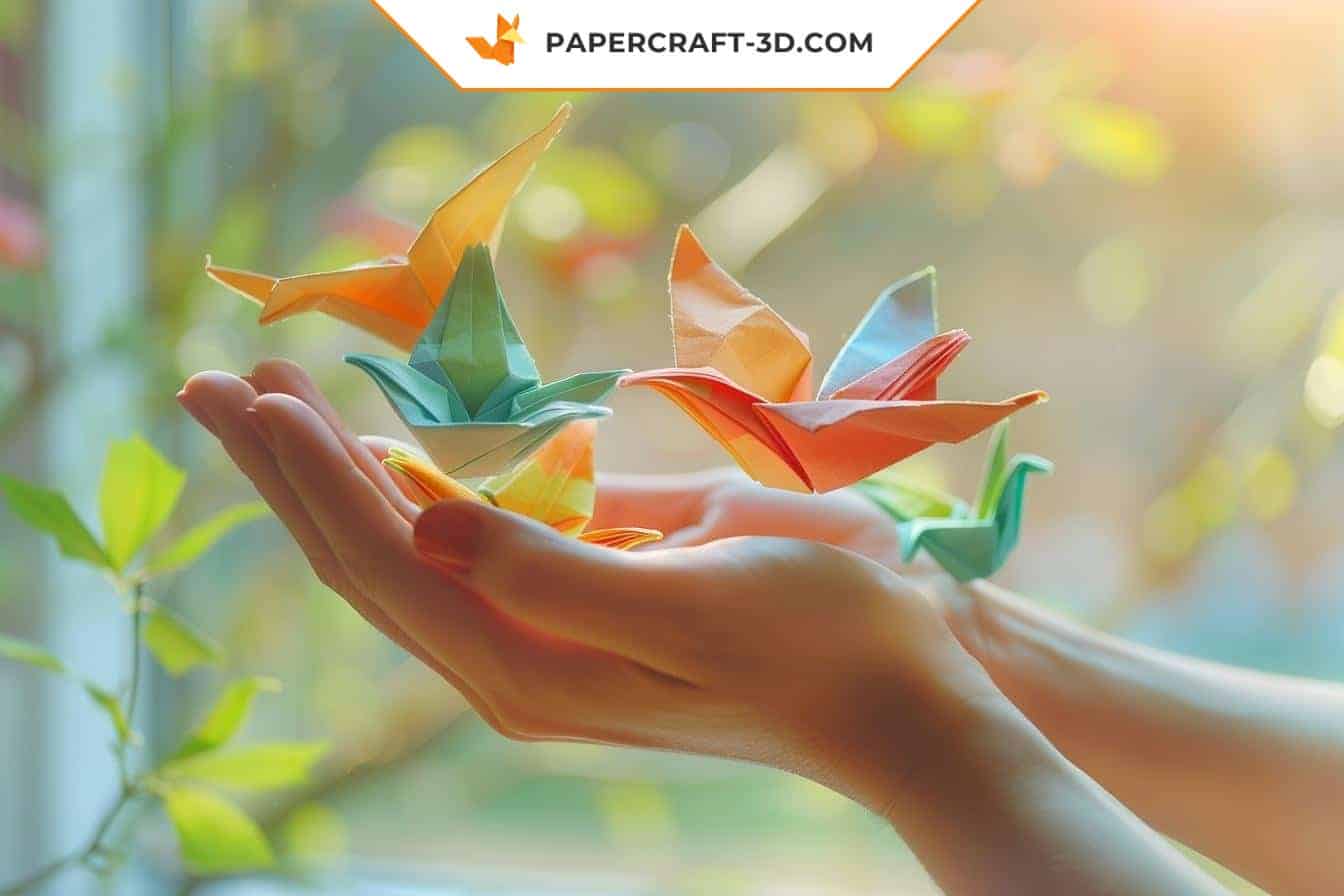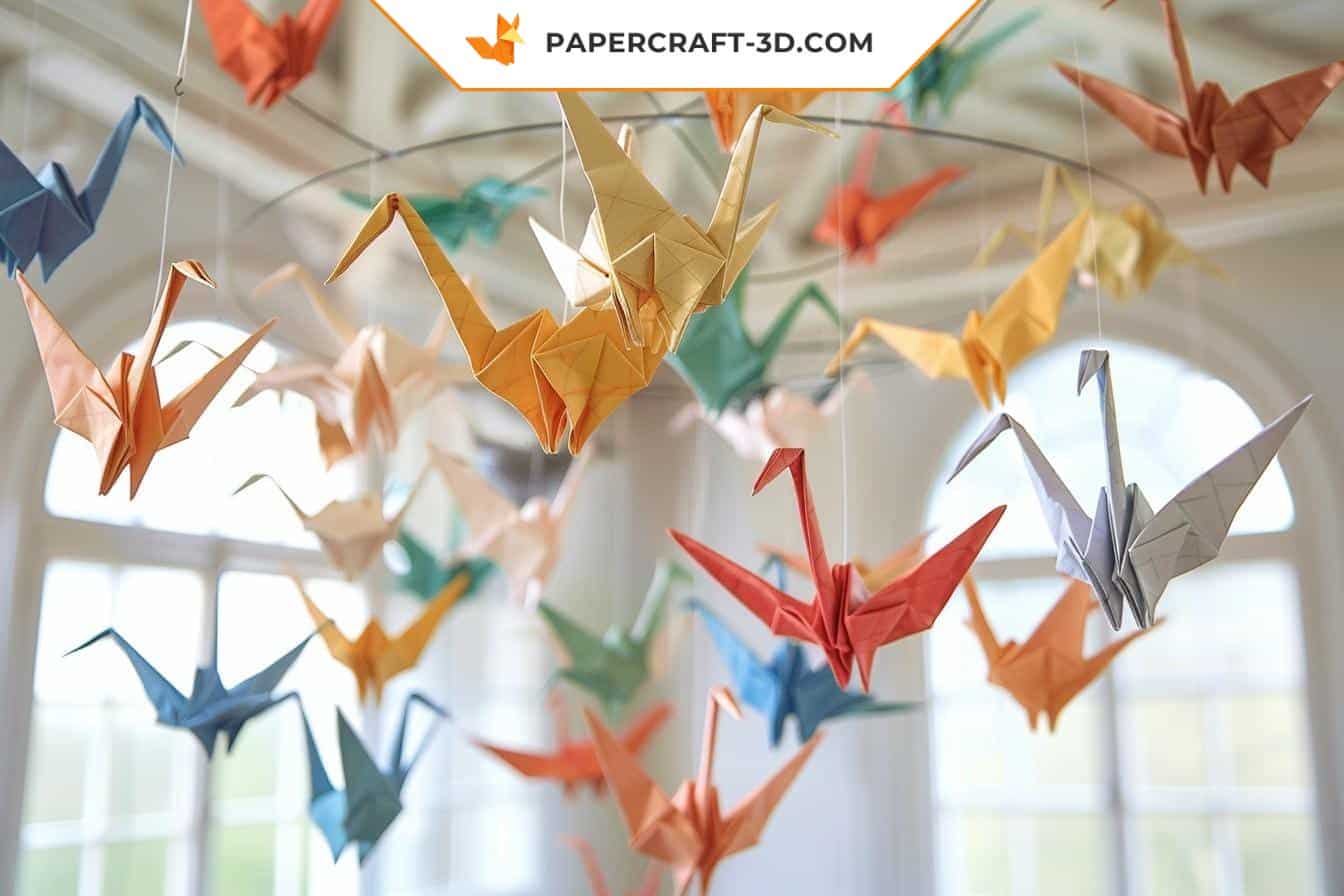| Key points | Details |
|---|---|
| ? Origami as art | Transforming a sheet of paper into a three-dimensional work of art. |
| ?♂️ Mental well-being | Promote a state of calm and mindfulness. |
| ? Educational tool | Fun learning of mathematical concepts such as geometry. |
| ? Therapeutic benefits | Improve dexterity and concentration, resilience tool against anxiety. |
Handicrafts, and origami in particular, have many virtues that are often overlooked. Through this ancestral practice from Japan, young and old alike can reap multiple physical, mental and emotional benefits. This article explores the many benefits of origami, not only as a creative pastime, but also as an educational, therapeutic and personal development tool.

Paper folding: an artistic and relaxing activity
Rightly considered an art form in its own right, origami is much more than just a creative hobby. This age-old practice from Asia invites you to transform a simple sheet of paper into a three-dimensional work of art, without the need for cutting or glue. As well as being fun and educational, origami is renowned for its relaxing and meditative effects. Immersing oneself in the creative process provides a mental escape, promoting a state of calm and full awareness. This momentary break in our often hectic daily lives acts as a genuine stress-reliever, paving the way to mental and emotional well-being.
Origami also stimulates creativity. Faced with a blank sheet of paper, the imagination is called upon to envision the multiple possibilities for creation, whether of animals, flowers or geometric figures. This deployment of creativity also helps to boost self-confidence, as each achievement is a source of satisfaction and personal pride. For those wishing to discover this art form or perfect their techniques, resources such as the step-by-step guide for beginners offer clear, accessible instructions.
Origami: what are the benefits?
As well as being entertaining and creative, origami is an exceptional educational and therapeutic tool. From an educational point of view, this activity encourages the learning of mathematical concepts such as geometry, symmetries and fractions, in a fun and interactive way. By manipulating and folding paper, children develop a spatial and visual understanding that supports their analytical skills. Professor Friedrich Fröbel, a pioneer in pre-school education, emphasized the importance of origami in children’s development, asserting that the practice contributes significantly to their intellectual awakening and growth.
Origami offers significant therapeutic benefits. For people suffering from attention deficit disorders, autism or motor difficulties, folding exercises are a gentle but effective form of re-education. Origami requires precise hand-eye coordination, and regular practice helps improve dexterity and concentration. What’s more, it represents a formidable resilience lever for those facing anxiety or depression, enabling them to channel their thoughts towards a soothing and gratifying activity. For those curious about the ideal material to use, the complete guide to the best types of papercraft paper offers invaluable advice tailored to each individual.

Easy origami: 15 ideas for making with children
Introducing children to origami is a great way to stimulate their fine motor skills, patience and powers of concentration. Starting with simple models builds a sense of accomplishment and encouragement. Easy and fun ideas include the classic paper boat, the flapping bird and the famous jumping frog. These quick-and-easy projects are the perfect introduction to origami and the pleasures of creative handwork.
It’s interesting to note that origami isn’t just about making figures. It’s also a way of addressing cultural themes, such as the study of flora and fauna, or seasonal and festive events. For example, on special occasions, creating Christmas or Halloween origami can become a meaningful and enriching family activity.
| Origami idea | Level of difficulty |
|---|---|
| Paper boat | Beginner |
| Jumping frog | Easy |
| Flapping bird | Intermediate |
For those wishing to expand their repertoire or help their children get started in this passion, adapted and progressive tutorials are available, such as the “ultimate guide” proposing how to make papercraft easily for beginners. These resources are indispensable for guiding novices step by step through their first folds, while enabling them to learn at their own pace.
The purpose of origami in personal development and therapy
Origami, by its simple yet complex nature, goes beyond the realm of an artistic activity to reveal itself as a genuine tool for personal development and therapy. This practice, which combines reflection, patience and precision, encourages a genuine inner dialogue, leading to greater self-knowledge. The mind, concentrated on the creation of a delicate work, finds in this art ahealthy and liberating means ofexpression.
Origami’s therapeutic impact has been studied and validated in a variety of clinical settings. By offering a creative outlet for the tormented mind, it helps to channel negative emotions and build psychological resilience. In certain situations, origami can even act as a bridge, helping people to verbalize difficult or traumatic experiences. This transformative and restorative aspect of origami underlines its potential as a healing tool, accessible to all, regardless of age or physical condition.






